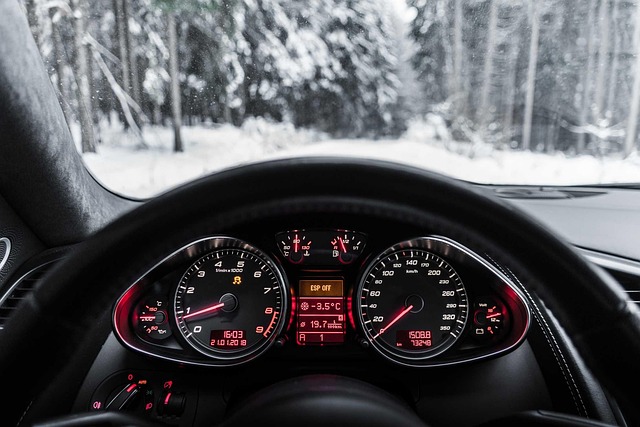When your check engine light turns on while you’re driving through Auckland or anywhere else in New Zealand, it can be concerning and confusing. Is it something minor? Or is your car about to break down? This article explores the top seven most common reasons why the check engine light might be on and explains what each one may mean for your vehicle. Understanding these issues can help you make informed decisions and know when it’s time to visit a trusted auto electrician like Eurosparx.
1. Oxygen Sensor Failure
How It Affects Your Vehicle
The oxygen sensor monitors how much unburnt oxygen is present in your car’s exhaust to help the engine control module (ECM) regulate the air-fuel mixture. If it’s faulty, your vehicle may burn more fuel than necessary or produce more emissions than allowed by New Zealand regulations. This issue can cause a noticeable decrease in fuel economy and even damage your catalytic converter over time.
Why the Light Turns On
A malfunctioning oxygen sensor usually triggers the check engine light because it interferes with efficient fuel combustion. Replacing a faulty oxygen sensor is typically straightforward but crucial in preventing further damage or failing your next Warrant of Fitness (WoF) inspection.
2. Loose or Damaged Fuel Cap
A Surprisingly Common Culprit
If you recently refuelled at a North Island service station and didn’t tighten the fuel cap properly, that simple oversight can activate the check engine light. This is because the fuel system needs to be airtight to maintain optimal pressure, and a loose or cracked cap lets vapours escape.
What You Can Do
Before panicking, check the fuel cap. If it’s loose, tighten it and drive for a bit—the light may turn off on its own. If it’s cracked or damaged, replacing it is inexpensive and may resolve the issue entirely. Continuing to drive with a worn cap can affect fuel economy and potentially cause other components to fail.
3. Catalytic Converter Issues
Signs of Catalytic Converter Failure
Your vehicle’s catalytic converter helps reduce toxic gases by converting them into less harmful emissions. If your car struggles to accelerate, emits a rotten egg smell, or your fuel economy drops significantly, the catalytic converter might be to blame. New Zealand’s environmental standards also make a functioning catalytic converter essential for passing inspections.
Why It Matters
A failing catalytic converter affects your vehicle’s performance and emits dangerous pollutants. It’s a costly component to replace, so early detection is important. An experienced auto electrician can diagnose this problem using scan tools suitable for modern vehicles found throughout New Zealand.
4. Faulty Spark Plugs or Ignition Coil
What Spark Plugs and Coils Do
Spark plugs ignite the air-fuel mixture in your engine, and the ignition coil provides the electricity needed to create that spark. If either of these components is faulty, your engine may misfire, which leads to sluggish performance and increased emissions.
Why It’s Common in New Zealand Vehicles
With New Zealand’s varying driving conditions—from Auckland’s urban streets to the hilly terrain in Wellington—spark plugs and ignition coils wear out differently compared to other places. Regular maintenance is key. Ignoring misfires can result in fuel inefficiency and long-term engine damage.
5. Mass Airflow Sensor Trouble
Symptoms of a Mass Airflow Sensor Problem
This sensor measures how much air enters the engine to determine how much fuel to inject for an ideal air-fuel ratio. A bad mass airflow (MAF) sensor may cause your engine to hesitate, idle roughly, or consume more fuel than usual.
How the Check Engine Light Warns You
Since the MAF sensor provides real-time data to your car’s computer, a failure can severely affect drivability. The check engine light comes on as a protective feature to alert you before further damage occurs. A diagnostic scan at Eurosparx can quickly pinpoint this issue.
6. Issues With the EGR Valve
The Role of the EGR Valve
The Exhaust Gas Recirculation (EGR) valve reduces emissions by recirculating a portion of the vehicle’s exhaust gas back to the engine. When malfunctioning, it can cause rough idling, engine knocking, or stalling.
What Locals Should Know
In New Zealand, especially if you drive in stop-and-go traffic around cities like Auckland or Christchurch, your EGR valve can clog over time. This blockage often triggers the check engine light. Cleaning or replacing the valve is important to maintain long-term vehicle health and meet local emission guidelines.
7. Transmission Problems
Indicators of Transmission Trouble
Sometimes, the check engine light is a signal for transmission problems, especially in automatic cars. Slipping gears, delayed engagement, or unresponsive shifting are signs to watch out for. In modern vehicles, transmission control is often integrated with the engine management system.
Why Acting Quickly Matters
Ignoring these early warnings may lead to complete transmission failure, which is one of the costliest repairs a driver can experience. A professional diagnosis can detect if the issue lies in the transmission sensors or solenoids, which are far less expensive to fix if caught early.
Other Reasons the Check Engine Light May Be On
Aftermarket Accessories or Modifications
If you’ve added non-standard parts to your vehicle—such as new headlights, radios, or an upgraded exhaust—it may interfere with your vehicle’s computer system. These modifications can confuse the car’s sensors and turn the check engine light on, even if the engine is running fine.
Battery or Charging Issues
A weak battery or alternator can trigger multiple warning lights on your dashboard, including the check engine light. While the issue may initially seem electrical, it can impact various systems in your vehicle that rely on stable voltage.
EVAP System Leaks
The EVAP (evaporative emission control) system prevents petrol vapours from escaping into the atmosphere. A leak in this system—whether it’s a faulty valve or cracked hose—can set off the check engine light. Such a fault may not immediately affect driveability but can still prevent your vehicle from passing a WoF.
Important Considerations When the Light Comes On
Don’t Ignore It
While some causes of the check engine light are minor, it’s wise to seek a professional diagnosis immediately when the light comes on. Minor problems can lead to major damage if left unresolved. In New Zealand, a proactive approach can prevent a service failure during roadside checks or routine inspections.
Understand Flashing vs Steady Light
If the check engine light is flashing, it’s signalling a severe problem—typically an engine misfire that can damage your catalytic converter. A steady light, on the other hand, usually means a less urgent issue, although that doesn’t mean it should be ignored.
What to Expect During a Diagnostic Check
The Value of a Professional Scan
Professional auto electricians use specialised diagnostic tools to scan your car’s onboard computer system for error codes. At Eurosparx, we use up-to-date scanners compatible with popular vehicle makes in New Zealand, including Japanese imports and European models. This allows us to quickly determine the cause of the issue and recommend the appropriate fix.
Benefits of Timely Diagnosis
Getting a prompt diagnosis not only ensures that issues are dealt with early but it also saves you money in the long run. Many problems picked up by the check engine light can be resolved affordably if caught early, avoiding expensive repairs later on.
Need Help With Your Check Engine Light?
Experiencing a check engine light can be stressful, but understanding the reasons behind it helps you respond appropriately. From sensor failures and fuel cap issues to transmission concerns, each warning has real implications for your vehicle’s performance and safety.
As experienced auto electricians in New Zealand, Eurosparx can diagnose and repair any issue causing your check engine light to come on. Contact our team today by calling 09 218 7789.


